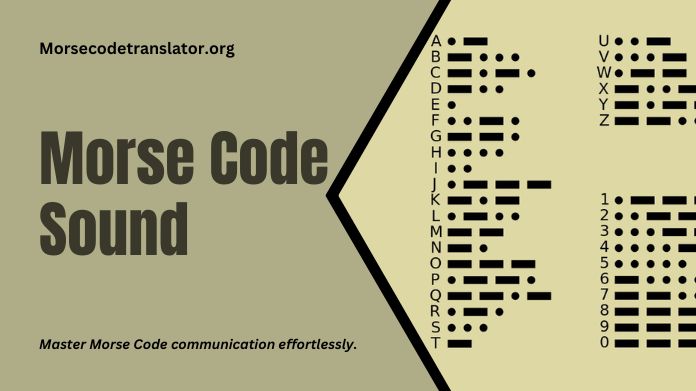Morse code, characterized by its distinctive series of dots and dashes, has been a crucial communication method for over a century. Despite its simplicity, understanding Morse code sound can be a challenging endeavor, especially for beginners.
In this comprehensive guide, we will delve into the intricacies of Morse code sound and provide practical insights to help you decipher its patterns confidently.
Whether new to Morse code or seeking to refine your skills, mastering the ability to interpret Morse code sound opens up communication possibilities. From its origins in telegraphy to its continued relevance in modern contexts such as amateur radio and emergency signaling, Morse code remains a timeless language with widespread applications.
Join us on this journey as we unravel the mysteries of Morse code sound, exploring its history, structure, and practical uses. By the end of this guide, you’ll be equipped with the knowledge and skills needed to effectively understand and transmit Morse code, allowing you to communicate with precision and clarity in any situation.
What is Morse Code Sound?

Morse code sound refers to the auditory representation of Morse code, a method of communication using a series of dots and dashes to represent letters, numbers, and punctuation. Each character in Morse code corresponds to a unique sequence of short and long signals, with dots representing short signals (often referred to as “dits”) and dashes representing long signals (known as “dahs”).
When Morse code is transmitted over an audio medium, such as radio or telegraphy, the dots, and dashes are represented by distinct sounds of varying duration and pitch.
Short, high-pitched tones typically represent dots, while more extended, lower-pitched tones represent dashes. The timing and spacing between signals also convey essential information, such as the distinction between letters and words.
Understanding Morse code sound involves recognizing and interpreting these auditory signals to decode the intended message. With practice, individuals can learn to recognize Morse code patterns by ear and effectively communicate using this timeless language.
How to Understand Morse Code Sound?
Understanding Morse code sound involves learning to recognize and interpret the auditory signals representing dots and dashes. Here’s how to get started:
1. Learn the Morse Code Alphabet: Familiarize yourself with the Morse code alphabet, which consists of combinations of dots and dashes representing letters, numbers, and punctuation—practice decoding Morse code characters by sight and sound.
2. Listen to Morse Code: Listen to recordings of Morse code transmissions to familiarize yourself with the sound patterns of dots and dashes. Pay attention to the timing and spacing between signals and the distinct tones used to represent dots and dashes.
3. Practice Recognition: Practice recognizing Morse code characters by ear. Start with simple exercises, such as decoding individual letters, and gradually progress to more complex messages. Use online resources or Morse code apps to generate random sequences for practice.
4. Memorize Common Words and Phrases: Memorize common words and phrases in Morse code to improve your proficiency. Focus on frequently used words, such as “SOS” (· · · — — — · · ·) and “hello” (· · · · · · · · — · · — · ·), to build your vocabulary.
5. Use Mnemonics: Use mnemonics or memory aids to help remember Morse code patterns. For example, you could associate the letter “S” (· · ·) with the sound of a snake hissing.
6. Practice Regularly: Consistent training is key to mastering Morse code sound. Set aside time daily to practice listening to and decoding Morse code transmissions. Over time, your skills will improve, and you’ll become more proficient at understanding Morse code by sound alone.
By following these steps and dedicating time to practice, you can develop the ability to understand Morse code sound and effectively communicate using this timeless method of communication.
Conclusion
Mastering Morse code sound is a skill that opens up a world of communication possibilities. By learning to recognize and interpret the auditory signals representing dots and dashes, individuals can effectively understand and transmit messages using this timeless method of communication.
Through consistent practice and dedication, anyone can become proficient in Morse code sound, whether for recreational purposes, emergency communication, or as a hobby.
As technology continues to evolve, Morse code remains a valuable tool with applications in various fields, including amateur radio, aviation, and emergency services.
By following the steps outlined in this guide and committing to regular practice, you can join the ranks of those who have mastered Morse code sound and contribute to its legacy as a reliable and versatile form of communication.
